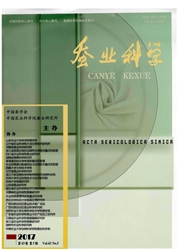

 中文摘要:
中文摘要:
观察微孢子虫在非天然宿主细胞系的生物行为过程,有助于探究微孢子虫的侵染特异性机制。选用鳞翅目昆虫粉纹夜蛾(Trichoplusia ni,Tn)细胞系为材料,接种家蚕微孢子虫(Nosema bombycis,Nb)孢子后观察其吞噬过程。结果发现:经氢氧化钾发芽预处理的Nb孢子虽然可以在Tn培养细胞液中发芽,但未见发芽孢子的孢原质进入Tn培养细胞;在接种Nb孢子浓度为2.0×10^5mL^-1以上时,观察到孢子通过内吞作用进入了Tn培养细胞,但未见孢子的增殖;随着时间的延长和进入Tn培养细胞的Nb孢子的增加,可引起Tn培养细胞的超微结构变化,并导致细胞的裂解。以上结果说明,虽未见Nb以发芽形式感染Tn培养细胞,但Nb能够被吞噬进入Tn培养细胞并破坏其结构。
 英文摘要:
英文摘要:
The present study selected Trichoplusia ni (Tn) cell line which belongs to Lepidoptera insect as material, and observed the process of encytosis after inoculating Nosema bombycis (Nb) spores. The results revealed that although potassium hydroxide pre-treated Nb spores could germinate in culture medium with Tn cells, the germinated sporoplasm failed to enter Tn cells. When the inoculation concentration was increased to over 2.0 × 10^5 spores per mL, Nb spores were found to enter Tn cells through encytosis. Yet, no propagation of Nb spores was observed in Tn cells. As time advanced and the number of Nb spores entering Tn cells increased, the ultrastructure of Tn cells were changed, leading to final disruption of the cells. The above results showed that, although Nosema bombycis can not infect Trichoplusia ni cells through sporulation, it can enter the cells through phagocytosis and destroy their structures.
 同期刊论文项目
同期刊论文项目
 同项目期刊论文
同项目期刊论文
 期刊信息
期刊信息
